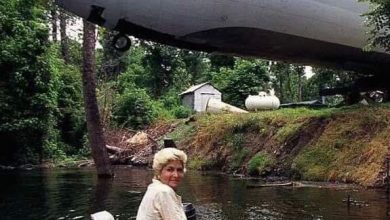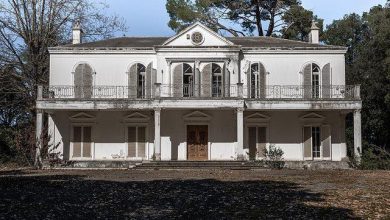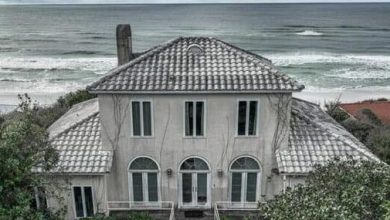The abandoned Packard Plant in Detroit, currently undergoing demolition. It was once reputedly the largest abandoned location in North America.
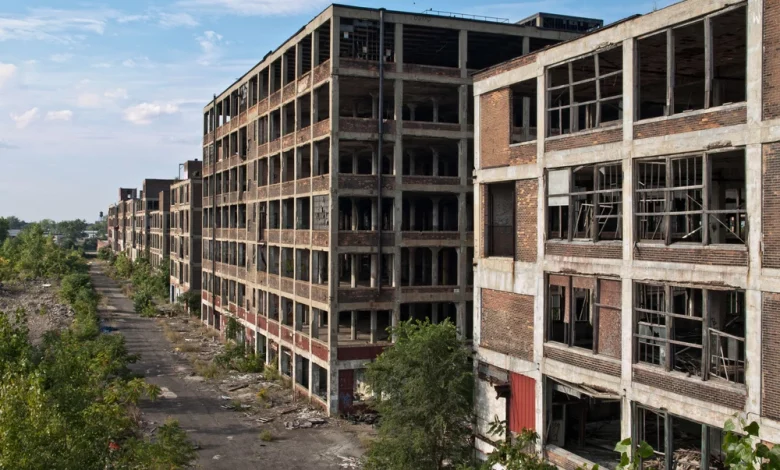
When it opened in 1903, Packard’s Detroit plant was the most advanced auto factory in the world. Designed by renowned architect Albert Kahn, construction began in 1903. The plant was located on a staggering 35 acres of land and boasted over 3.5 million square feet of space. It also was the first industrial site in Detroit to use reinforced concrete in its construction. The Packard Motor Car Company built an excellent reputation not only for innovation (introducing the modern steering wheel and 12 cylinder engine) but for luxury, attracting some of the wealthiest auto buyers across the world. During WWII, the Packard plant produced engines for P-51 Mustang fighter planes, but afterward their legacy as a status symbol was slowly diluted by their introduction of cars aimed more at the middle class. Losing their upper class market and not finding footing as a middle class manufacturer because of heavy competition from the Big Three, their last car model, simply titled the ‘Packard’, was produced in 1958 though the Detroit plant ceased manufacturing in 1957. Several attempts were made to resurrect the brand, but to no avail. The labyrinthine plant in Detroit still stands vacant, now a status symbol of a different sort.
The Packard Motor Car Company is hard to fathom, even when one is inside of it. Stretching for blocks upon blocks, it feels like entering a maze you may never find your way out of. Even when you make your way to a roof to survey the site, from certain vantage points the factory sprawls out over the horizon as though it has swallowed the entire world. Because it has been abandoned for quite some time and is located in a city that is fairly efficient as stripping its buildings of things of worth, there isn’t a lot left to give you an idea of how it was in the past – mementos are few and far between, and vandalism and graffiti have taken quite a toll. On my initial visit in 2009 we did see several other people exploring the factory and they seemed not to be threatening sorts, but there is always the concern about running into someone who will try to murder you to steal your equipment – I was perhaps never more happy for the companionship of others than I was in Detroit, where the four other explorers I was with helped provide a sense of being buffered from violence.
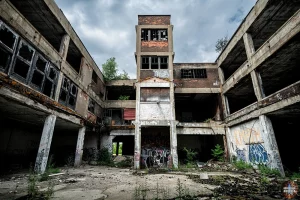
One of the massive, gutted courtyards of the north section of the campus as it was when I returned to the Packard Plant in 2018
What Packard lacks in terms of remaining untouched, it more than makes up for in scope. We walked through corridor after corridor, through huge rooms, crumbling stairways, a paintball splattered administrative section, and across the elevated walkway. We went up through the substantial parking structure attached to it, and gazed out from the roof over the twisted remains of what was once a widely respected luxury automobile manufacturer. Trees are starting to overtake the structure in some places, and I find odd comfort in that. It may be a pile of indistinguishable rubble one day – whether due to the elements and time or because it has been razed – but today, it is still something of a spectacle, a site to be seen, but more importantly, a site to be considered.
That being said, in 2013 investor Fernando Palazuelo purchased the plant for $405,000 with plans of rehabilitating the structures into a multi-purpose campus. Many have been doubtful whether the $350 million project would produce any results, but I was able to revisit Packard in 2018 and talk with a representative of his company, Arte Express. They struck me as realistic about the amount of time and work to be done, but more importantly, they had already completed much of the work clearing out the administrative building and were preparing to rehab it. On both of my visits construction crews were active, and while I have seen many large restoration projects go sideways (the Scranton Lace Company being a good example), I’m cautiously optimistic.
Detroit itself had changed quite a bit from when I first visited it in 2009. The downtown core is surprisingly and refreshingly vibrant, whereas a decade prior it had felt eerie and deserted. Several of the large abandoned skyscrapers like the Book Cadillac Hotel and the Farwell Building were improbably brought back to life after years of abandonment, and while there are still hundreds of abandoned homes and other buildings surrounding the city core, it does feel like things are changing for the better in a much bigger way than once thought possible. Rather than lamenting the city’s fall from grace, I’d much rather cheer for the efforts of those in the community that are working to make it the exciting and attractive place I saw when I revisited the downtown.
While the iconic bridge over E. Grand Blvd collapsed and the city demolished one of the larger and more deteriorated buildings it owned on the property in early 2019, I’m hoping that Arte Express can make good on its vision. It would mean a lot to the neighborhood and to the narrative of Detroit as a whole. If one of the largest and best known abandoned sites in the city can defeat the expectations of fatalists, I’m confident that the rest of the city can as well.


